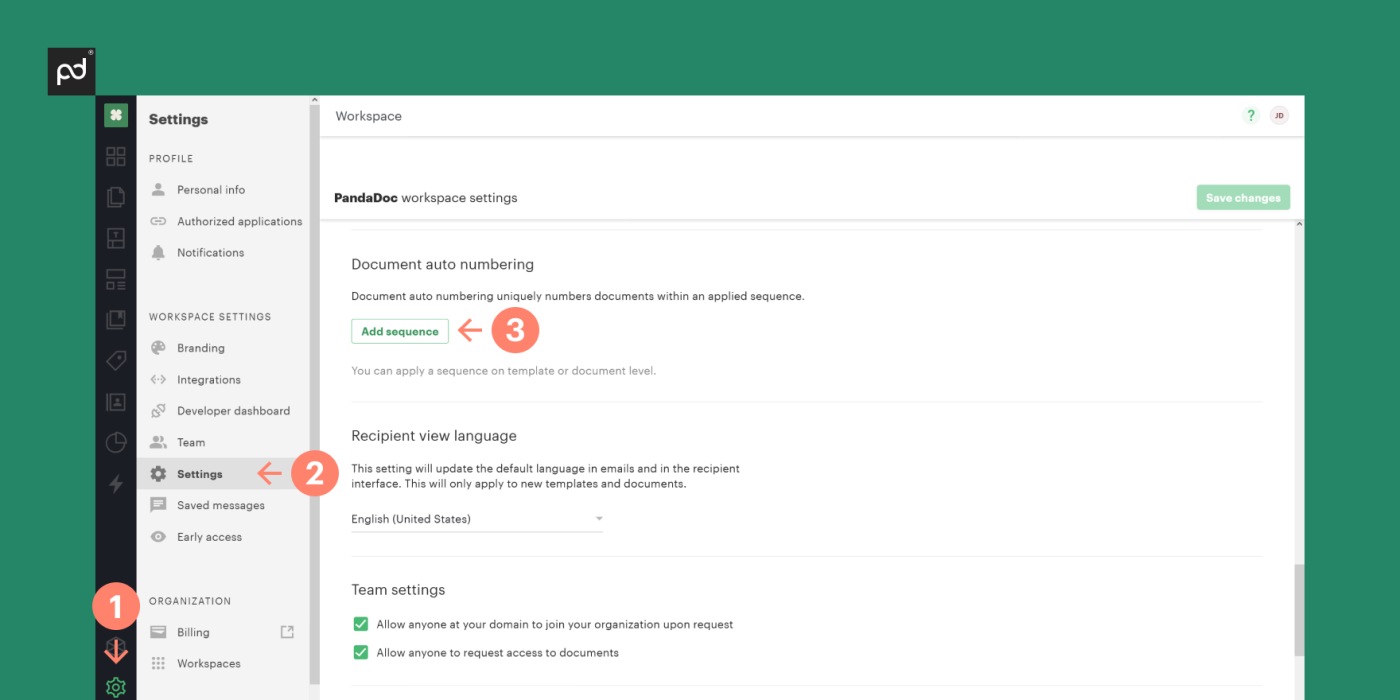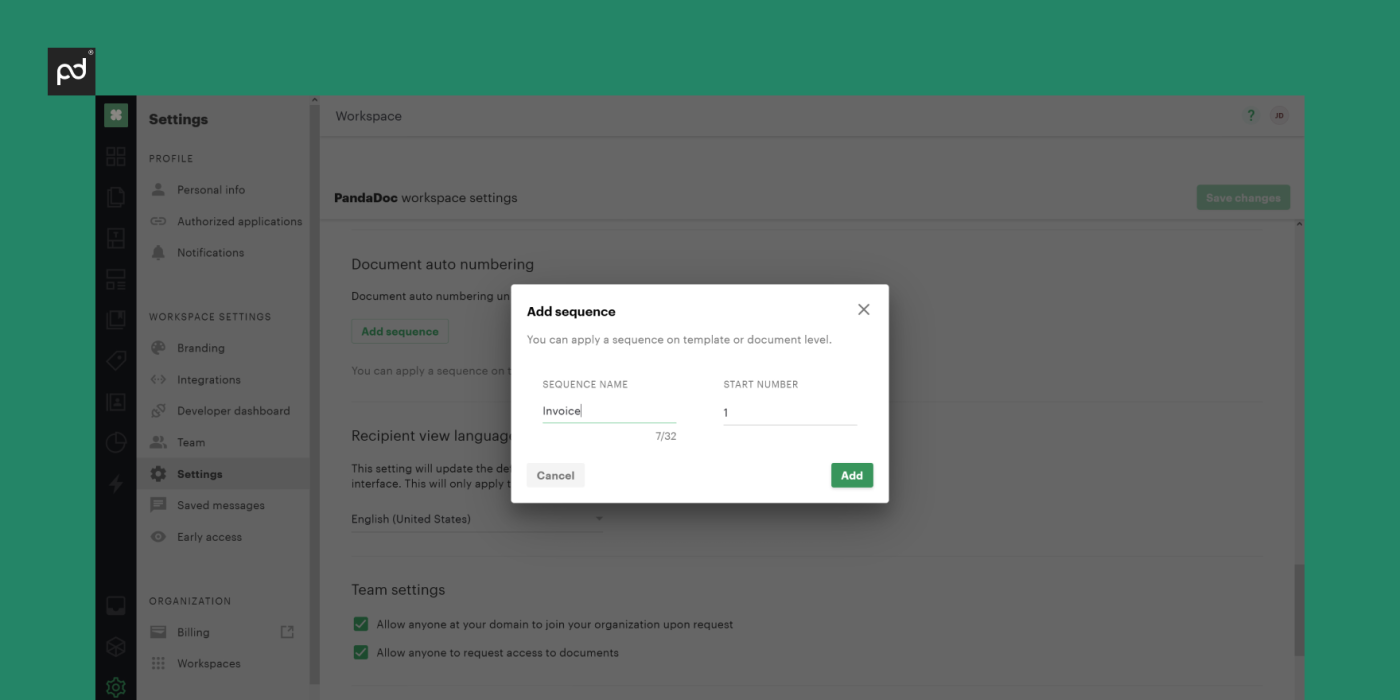How to number invoices
An invoice number is the unique code that is systematically given to invoices.
Invoices are usually numbered via one of these five options:
- Sequential numbering [HRG0001, HRG0002]
- Chronological order numbering [YYYYMMDD-001]
- Client and project number [KC01-103-01]
- Alphanumeric invoice numbers [AC-0002]
- Invoicing software
In this article, we’ll show you how to use each invoice numbering system. Let’s go!
Can you invoice without an invoice number?
The short answer is yes. However, unique invoice numbers allow for a faster payment and reduced efforts associated with tracking transactions.
Also, it depends on the regulations.
For example, you don’t need to create an invoice and then number it under US law, so it is up to the discretion of business owners whether they are created.
In contrast, invoice creation and regulation is common in EU countries.
Therefore, always check the laws of the country that you are doing business with or within to stay compliant and avoid any cash flow roadblocks.
5 options to assign an invoice number
1. Sequential numbering
Beginning from number one and following a sequential order of numbers is considered to be the easiest way to keep track of invoices.
Choosing a sequential order helps companies as well as employees avoid confusion or chances of duplicating invoice numbers.
Let’s say you send five invoices per week to different companies — here is what your sequential invoice numbering system may look like:
- HRG0001
- HRG0002
- CCB0003
- CCB0004
- BBS0005
2. Chronological order numbering
This is another way where the invoice number will be longer, more detailed and with the date of invoice creation on it.
Let’s take as an example an invoice that was created on October 15th, 2023.
This is how that may look like:
Invoice number: 20231015-001
Format: YYYYMMDD-001
As you can see, the first number is the date, and the second part will serve as the individual identifier for that order, a number which increases by one with every new invoice.
There are also some other formats of the chronological invoice numbering. These are:
- 30102020-001 (DDMMYYYY)
- 10302020-001 (MMDDYYYY)
If your goal is to personalize the invoice, you can also add a customer number as well.
For example, if the client’s number for the sale was 200 (format: CCC), the invoice identification number may look like this:
20231015-200-001
Format: YYYYMMDD-CCC-001
3. By client and project number invoice
You can also reference your invoices by either client or project number.
Project numbering is most suitable for businesses/freelancers involved in a variety of projects, or companies whose project number is important, like those in the construction industry.
This is how an invoice number may look like:
- project number + customer number + sequence number;
- customer number + project number + sequence number.
For project number KC01, and client number 103, the assigned invoice number would be either:
- KC0110301
- 103KC0101
In every numbering system, the sequence of the unique invoice number should always be placed at the end, helping you avoid duplicates and simplify tracking.
4. Alphanumeric invoice numbers
Alphanumeric invoice numbering involves numbers, letters and special characters like slashes and dashes.
The wide range of symbols used in an invoice number makes it easier to track your invoices.
An example of an alphanumeric invoice number might be AC-0002, where the “AC” is the project code specific to your business.
You may also choose several letters to indicate a specific project code, but always ensure it stays consistent.
5. Use sales invoicing software
Accounting and billing generation software is a go-to solution when you want to reduce manual work and confusion, whether working with a high amount of invoices or just filling out one invoice at a time.
Depending on the software you select, you will be able to choose how you want your invoices to be numbered.
For example, using PandaDoc’s accounting and billing generation software, you can automatically number invoices.
You also have the ability to edit the number, customizing the invoice ID based on your specific needs or preferences.


Best practices when using invoice numbers
Follow regulatory guidelines
Ensure all your accounting procedures are compliant with any applicable state and federal financial rules and regulations.
And in the event you will fall under any regulatory or tax audits, keeping all your documents labeled and organized will help smooth things out.
(Note: Countries outside the US may have different invoicing and accounting laws, including specific guidelines for invoice numbering, so be sure to check the local laws of all jurisdictions wherever you plan on doing business.)
Store invoices digitally
Storing all documents electronically using accounting software allows for:
- Higher security: File encryption and other advanced security measures implemented by accounting software protect confidential records.
- Easier access: Simple, fast search of needed documents, reducing manual work and confusion.
Create, e-sign and automatically number your invoices with PandaDoc
Numbering invoices is always a good practice to avoid duplicates and confusion, making your records clear and speeding up payments.
PandaDoc’s online sales invoicing software streamlines invoice creation, e-signing and numbering, as document numbers will automatically load and populate with every new invoice.
You can also streamline the process by using and customizing invoice templates.

